MOJ
eISSN: 2573-2919


Review Article Volume 9 Issue 4
1Doutoranda em Design, Pontifícia Universidade Católica do Rio de Janeiro (PUC-Rio), Brazil
2Doutor Artes e Design, Pontifícia Universidade Católica do Rio de Janeiro (PUC-Rio), Brazil
Correspondence: Evânia de Paula Muniz, Doutoranda em Design, Pontifícia Universidade Católica do Rio de Janeiro (PUC-Rio), Rua Marquês de São Vicente, 225, Gávea, Rio de Janeiro – RJ, Brazil, Tel (21) 92017-1476
Received: July 12, 2024 | Published: July 29, 2024
Citation: Muniz EDP. A journey of research and action: Tatiana Chagas Memória Municipal School, Jardim Maravilha, Guaratiba, Rio de Janeiro. MOJ Eco Environ Sci. 2024;9(4):155-160. DOI: 10.15406/mojes.2024.09.00320
This work shared the experiences of a research teacher at the Tatiana Chagas Memória Municipal School, located in Jardim Maravilha, Guaratiba/RJ. It took place from June 19 to December 20, 2023. The action research proposed an education based on the pillars of Human Rights, Rights of Nature and Inclusion, advocating a flexible approach that incorporated various languages and tools.
The methodology adopted had as its central axis Art-Based Research (PEA), which incorporates several approaches. This research was guided by the theory proposed by economist Alberto Acosta in his book "Bem Viver" (2016), "Carta da Terra" (1992), and by Edward Wilson's concept of Biophilia (1984). To make the research viable, tools such as Design Thinking and the Affective Tree were used. With the aim of meeting the Sustainable Development Goals (SDGs).
Keywords: art, biophilia, education and sustainabilty
Jardim Maravilha1 is a neighborhood located on the west side of the city of Rio de Janeiro, in the Guaratiba region. Its HDI is 0.744 and, according to the IBGE in 2022, Guaratiba has a population of 110,049.
According to Alvarez et al. (2020), the neighborhood was established in the 1960s, representing one of the large-scale subdivision projects in the municipality of Rio de Janeiro.
The neighborhood was initially planned as a residential area, but without adequate infrastructure and with disorderly occupation, it has become a neglected territory. Due to its location in a lowland and proximity to bodies of water such as the Cabuçu River, the neighborhood is susceptible to seasonal flooding, which directly affects residents' quality of life, damages property and creates environmental concerns.
Tatiana Chagas Memória Municipal School is located at Rua Pedro Osório, 360, Jardim Maravilha, Guaratiba. In the city of Rio de Janeiro, Brazil. The institution has around 1,500 students, ranging from sixth to ninth grade, and includes special classes for Youth and Adult Education (EJA) (Figure 1).

Figure 1 Tatiana Chagas municipal school entrance memory. Rua Pedro Osório, 360, Jardim maravilha, Guaratiba/RJ.
s
Source: Google Map (2024)
The aim of this work was to motivate students to take part in the Arts subject, to inspire them with methodologies brought from art and design and to make them understand that every territory is a place for learning.
The concept of territory goes beyond its geographical and physical dimensions; it also incorporates cultural, social and identity elements that influence the way individuals relate to the space around them.
Learning preceded teaching or, in other words, teaching was diluted in the truly fundamental experience of learning. I am not afraid to say that there is no validity in teaching that does not result in learning in which the learner has not become capable of recreating or reworking what has been taught, in which what has been taught that has not been apprehended cannot really be learned by the learner.1
In this sense, it is important to consider dialogic pedagogy, widely disseminated by Paulo Freire in his book, "Pedagogy of Autonomy" (1996). According to this pedagogy, it is in the interaction between student and educator that knowledge, especially informal education, converges with formal education and is valued, contributing to an integral education. The disconnection between teacher and student over time, coupled with an ever-increasing connection with digital technologies, highlights the need to technologize the school. Educators are sometimes at the mercy of this technology in the hope of making teaching more enjoyable for students, or they completely appropriate the technologies, distancing themselves from interaction with students and forgetting that they are biopsychosocial beings.
The study proposed a flexible approach, incorporating different languages and tools to analyze complexity in its entirety. It unites academic knowledge with local knowledge, revealing what is intrinsic in each person. Thus, as artists and educators, we took the Art Based Research (ABR) methodology as our main axis.
In our work, we have included social design approaches with Victor Papanek,2 Alberto Acosta's3 Well Living proposals, permaculture design strategies, Mollison,4 design thinking and the affective tree, thus offering a systemic approach to Edward Wilson's (1983) Biophilia proposals.5
1 SITE (https://www.google.com/maps/place/Jardim+Maravilha,+Rio+de+Janeiro+-+RJ,+23031-320/@-22.9630562,-43.6163009,15.5z/data=!4m6!3m5!1s0x9be57ac6c07273:0xe94d98fbe8970951!8m2!3d-22.9618044!4d-43.6079009!16s%2Fg%2F11ldqsgtn7?entry=ttu)
I was on a temporary contract for six months at the Tatiana Chagas Memória Municipal School, from June 19 to December 20, 2023.
Initially, the classes were marked by presentation exercises. At each meeting, I proposed questions on topics such as identity, living environment, interpersonal relationships, personal preferences and future aspirations. A word was also presented as the theme of the lesson. Each question was answered in the form of artistic expression. However, in a class of around forty students, only a minority of four or five students were willing to draw.
In response to this reluctance, I introduced the theme "Reframing spaces" as a goal, proposing practical lessons involving exploring the school environment as a whole. Corridors, courtyard, parking lot and areas outside the school. My main objective was to understand the spatial perception of these students. Using my doctoral research as a tool, I sought to explore their conceptions of themselves, the community and the surrounding culture.
According to Freire, the act of teaching demands a constant practice of research, teaching and research are interdependent, coexisting at the heart of each other.
Teaching requires research. There is no teaching without research and no research without teaching. These two things meet in each other's bodies. As I teach, I keep searching, reprocuring. I teach because I search, because I investigate, because I investigate and investigate myself. I research in order to find out, by finding out I intervene, by intervening I educate and educate myself. I research in order to know what I don't yet know and to communicate or announce what is new.1
This pedagogical approach is in complete harmony with our vision of education, in which teaching is implemented by searching for local identity, history and culture as a means of improving educational practice. This perspective is in line with the notion of "Confluence", presented by thinker Antônio Bispo dos Santos in his book "A terra dá, a terra quer", (2023) when he discusses the importance of recognizing and incorporating local knowledge into each methodological application, considering the way of doing things and the specific vocabulary of each locality as an element of engagement.
To weaken sustainable development, we brought biointeraction; for coincidence, we brought confluence; for synthetic knowledge, organic knowledge; for transport, transfer; for money or exchange, sharing; for colonization, counter-colonization... and so on (Bishop, 2023. P.4).
The perspective of quilombola Antônio Bispo dos Santos highlights the importance of re-examining and reinventing fundamental concepts in various areas in order to promote integrated and collaborative solutions. He stresses the importance of a more holistic and organic understanding of knowledge as a basis for building development from different origins, avoiding the mental colonization imposed by dominant powers on native peoples, who often ignore even their own language. This mentality is based on the erroneous assumption that these communities are in an inferior position and should therefore be submissive to everything that globalization brings.
To provide a more engaging approach, I configured the school's murals by adjusting them to address relevant monthly themes, such as traditional festivities, campaigns linked to health and well-being, social and environmental issues, among others.
With each proposal, the students showed more interest and we got closer and closer. Below is a selection of some of the experiences we had.
Occupying the third floor corridor of the Tatiana Chagas Memória Municipal School in the "Pink October" campaign (Figure 2) (Figure 3).
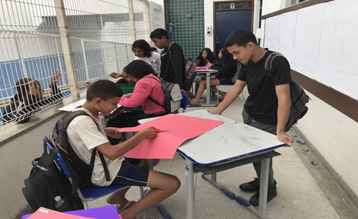
Figure 2 Third floor corridor Tatiana chagas municipal school class memory - 1704 - Pink October mural – before.
Source: Personal collection (2023.2)
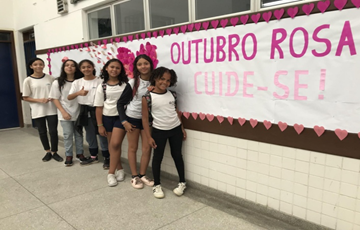
Figure 3 Third floor corridor Tatiana chagas municipal school class memory - 1704 - Pink October mural – afterwards.
Source: Personal collection (2023.2)
The "Pink October" school campaign is aimed at raising awareness about the prevention and early diagnosis of breast cancer. Involving students in this type of activity helps to disseminate important information about health and disease prevention (Figure 4) (Figure 5).
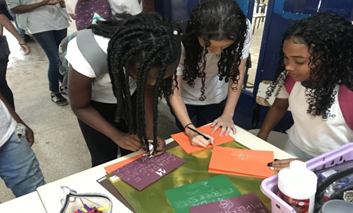
Figure 4 Patio - Tatiana chagas municipal school memory - Class - 1901 ODS Mural – before.
Source: Personal collection (2023.2)
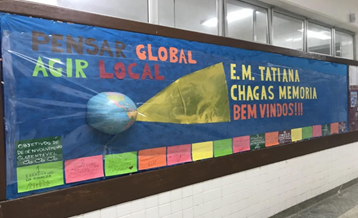
Figure 5 Playground - Tatiana chagas municipal school memory - Class - 1901 ODS Mural – afterwards.
Source: Personal collection (2023.2)
Mural on the Sustainable Development Goals (SDGs)
Making a mural about the United Nations (UN) Sustainable Development Goals (SDGs) is important because by learning about the SDGs and seeing their visual representations, students and the school community can be inspired to take concrete action to contribute to achieving these goals at a local level, which empowers them. This theme can be integrated into various subjects, such as geography (global understanding), science (climate change and ecology), citizenship (social justice and peace), among others.
Intervention on the classroom door, as well as making posters with the Youth and Adult Education (EJA) class. On this day, they talked about recognizing Afro-Brazilian history and culture, racism and discrimination (Figure 6).
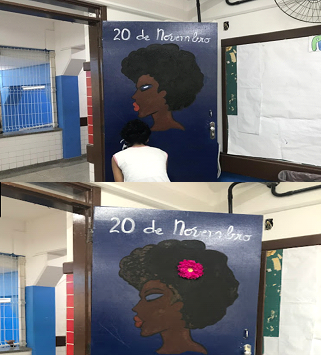
Figure 6 Room 2, second floor - EJA class intervention on the door – afterwards.
Source: Personal collection (2023.2)
Discussing and celebrating Black Awareness Day is important in the fight for racial justice and equality. It is an opportunity to reflect on the public policies and actions needed to remember the leaders of the black resistance against slavery in Brazil.
These were just a few examples that made the teaching environment dynamic and inclusive, resulting in greater dedication on the part of the students.
The lessons followed the guidelines of the National Common Core Curriculum (BNCC 4.1.2) and are in line with the National Education Guidelines and Bases Law (LDB, Law 9.384/1996). This approach is guided by ethical, political and aesthetic principles, aimed at integral human formation and the construction of a just, democratic and inclusive society. With the principles of the "Earth Charter" (1992).
The Earth Charter is a document conceived during the United Nations Conference on Environment and Development, Rio-92, with the purpose of addressing issues related to a peaceful, just and sustainable global society. It corroborates Alberto Acosta's3 visions of "Good Living" and reinforces the perspective of quilombola Antônio Bispo (2023), who highlights the confluence of thoughts as a driving force behind sharing and learning. Guided by Art Based Research (ABR) (Figure 7).
Da Costa and Walther6 explain that this approach allows us to explore complex issues related to a group of people and to recognize social questions that appear subjectively during the research. We included tools such as design thinking and the affective tree. With these confluences of ideas, we developed a unique proposal that revealed the subjective issues embedded in the students.
The educational activities included round tables, drawing workshops, vegetable garden workshops, exhibitions and a walk around the neighborhood. The aim was to recognize the territory, reflect on the space we occupy and ways to improve the environment in which we live.
The students at the Tatiana Chagas Memória Municipal School often come from broken families and many see school as a leisure refuge. In this scenario, they face a variety of challenges that affect their concentration and participation in class. Some students shared with me that the most meaningful moment for them was snack time, due to the lack of food at home. This highlights the importance of promoting student protagonism and encouraging activism, seeking to awaken interest and sympathy for knowledge.
Previously accustomed to traditional lessons held only in classrooms, the students initially perceived the activities of making murals in the corridors as a form of rebellion. However, as they became involved in creating these murals, they began to show a renewed interest in the subject of art and other subjects that provided information to improve the quality of their artwork. For example, classes 1702, 1901 and 1902, when listing the classrooms, needed to ensure that the numbers were the same height and size, which required calculations. As in Figure 8 and Figure 9 below.
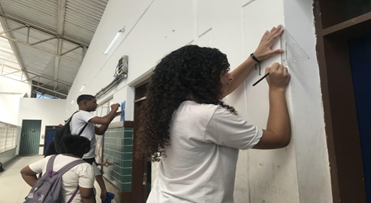
Figure 8 Room 12, third floor - Class - 1902 intervention on the door – during.
Source: Personal collection (2023.2)
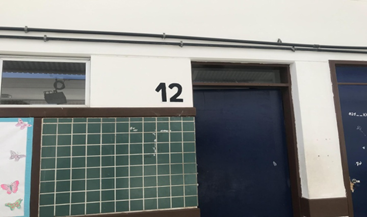
Figure 9 Room 12, third floor - Class - 1902 intervention on the door – during.
Source: Personal collection (2023.2)
I noticed significant improvements in the handwriting and uniformity of the work with each proposed intervention. On the covers of the works. They were designing before they did anything.
During the lessons on planting, I talked about the importance of having a vegetable garden at home, eating a balanced diet, and the word care for seed germination.
I used the "Tree of Affections" tool, which is a way of organizing feelings, with the trunk being the word you wanted to reflect on and the leaves being what the students said. When I talked about "environment", the words that came up in the EJA class were: seeds, family, respect, beauty, cultivate, plants, nature, joy, earth, tree, taste, joy, love, water (Figure 10).
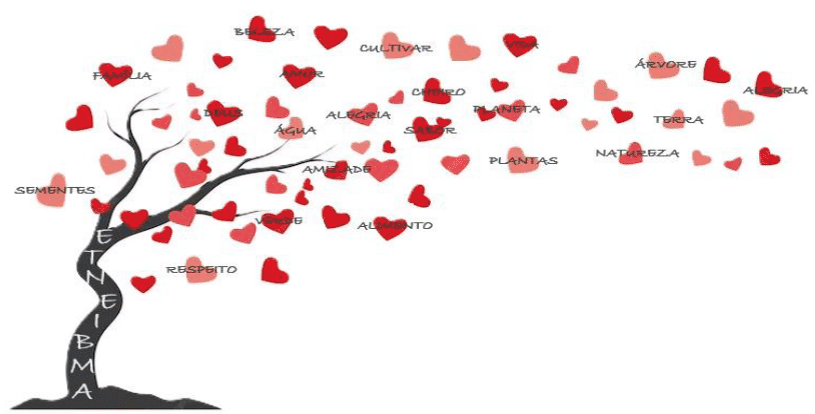
Figure 10 Affective Tree - EJA class. The representation was shown in Power Point to the class.
Source: Personal collection (2023.2)
We experienced other significant moments, such as planting the beds after the seeds had germinated (Figure 11) (Figure 12), which involved forming a group of waterers, made up of five students from each class. Watering was carried out twice a day to ensure that the seedlings developed properly. Exhibition (Figure 13) (Figure 14) "Me and space", where classes 1901 and 1902 not only assembled and exhibited their work, but also offered workshops and provided monitoring to explain details of their creations, seeking to express their singularities. Using the design thinking tool, they followed an interactive process that included stages such as empathy, definition, ideation, prototyping and testing. They understood processes.
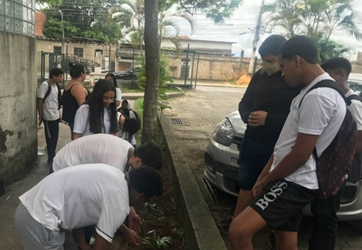
Figure 11 Lesson on planting (during) - EJA class Tatiana chagas memorial school parking lot.
Source: Personal collection (2023.2)

Figure 12 Planting lesson (after). Tatiana chagas memorial school parking lot.
Source: Personal collection (2023.2)
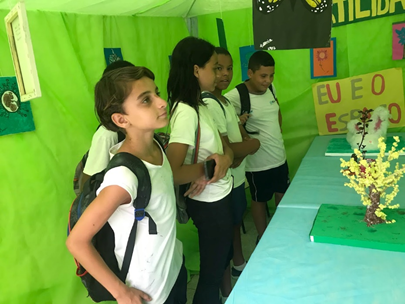
Figure 13 During the exhibition "Me and space". Internal courtyard of the Tatiana chagas municipal school memory.
Source: Personal collection (2023.2)
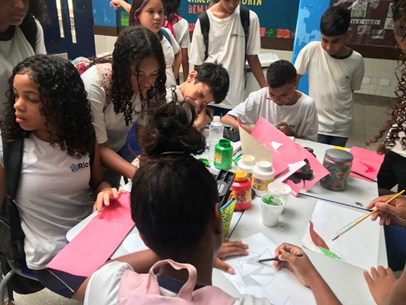
Figure 14 During the exhibition "Me and space". Internal courtyard of the Tatiana chagas municipal school memory.
Source: Personal collection (2023.2)
The level of engagement reached 100%, evidenced by the fact that other students, who were not part of my classes, volunteered to take part in the activities. The effectiveness of the methods used, coupled with the extracurricular effort, brought a positive dynamic to the collective activities.
The workshops were held during regular class time, with assessment centered on the students' attendance and participation. This evaluation criterion was chosen to foster an inclusive and participatory environment, encouraging the active involvement of everyone, regardless of their abilities. This assessment considered not only the knowledge acquired, but also the personal and social growth resulting from active participation in the workshops.
During these sessions, the principles of the 5 Rs of sustainability were addressed - rethink, refuse, reduce, reuse and recycle, promoting the redefinition of waste through reuse. They also encouraged reflection on our rights and duties as citizens in the context of the fight against socio-environmental inequalities and the search for a healthier environment for all.
Actions aligned with the 2030 Agenda have contributed to the construction of a scenario of protagonism, through the reframing of acts and knowledge that permeate everyday life. The project encouraged interdisciplinarity by involving other teachers in partnership, promoting an integrated and holistic approach to dealing with the complexities of environmental and social issues.
This transformation was carried over to their homes, as some of the students reported that they were building a planting space at home and recycling their garbage.
The support of the school management and the collaboration of teachers from other subjects were fundamental, making the events more relevant.7–10
The experience with the students at Tatiana Chagas Memória Municipal School revealed a complex environment, where many students face personal and socio-economic difficulties and use the school as a refuge. The introduction of practical activities, such as making murals and planting seeds, brought a new dynamism to the school environment. These activities not only aroused the students' interest in the arts and other subjects, but also provided opportunities to develop practical skills and reflect on important themes such as sustainability and identity. The project fostered interdisciplinarity, strengthened dialogue on environmental and social issues and aligned itself with the UN's 2030 Agenda and the objectives of the National Common Curriculum Base (BNCC).
The elements presented in this study outline a notable trend towards ecocentrism and biocentric ethics in the social sectors. In education, it manifests itself through practical proposals centered on the axis of art and the environment, inspired by Edward Wilson's concepts of biophilia and the reflections on confluence proposed by Antônio Bispo. The project implemented at the Tatiana Chagas Memória Municipal School takes a truly interdisciplinary approach.
This approach not only breaks with conventional paradigms, but is also based on the concept that education should transcend the boundaries between disciplines. By incorporating biophilic principles and original knowledge to reflect on fundamental guidelines such as the Earth Charter and understanding the power of the word confluence as a driving force, encompassing different areas of knowledge in favor of a holistic and integrative education, as shown in the diagram below (Figure 15), based on these foundations: Human Rights, Rights of Nature and Inclusion, a more comprehensive, engaged and sustainable learning has emerged.
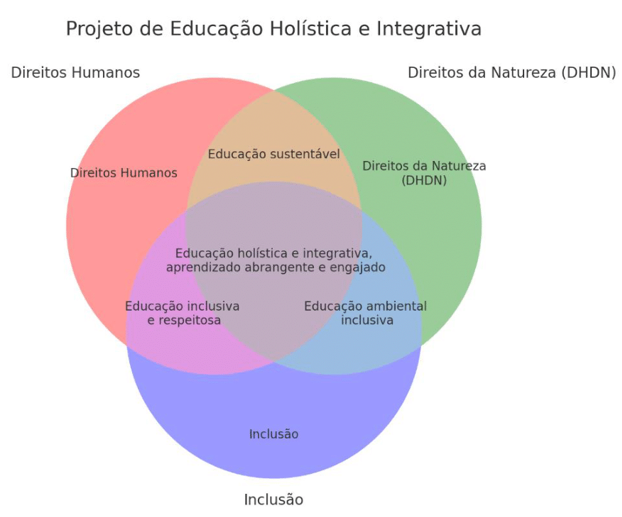
Figure 15 Holistic and integrative education project diagram.
Source: Developed by the author (2023)
The diagram represents the holistic and integrative education project. Each circle corresponds to one of the main areas of the project (Human Rights, Rights of Nature and Inclusion), with the overlaps indicating the combined results of these areas:
With gratitude in my heart, I address the management of Escola Municipal Tatiana Chagas Memoria, whose enlightened vision opened doors and windows for the flourishing of this research os school grounds. I am grateful for every encouragement, for every opportunity offered, allowing this project to come to life. To the teachers who joined this journey, my deepest gratitude. And, especially to the students, who form the core of this experience. You, with your curiosities and enthusiasm, transformed each class into a meeting of discoveries. It was through their eyes and minds that this research found its true purpose and meaning. May this journey of learning and growth remain in all of us.
None.
Author declares that there are no conflicts of interest.

©2024 Muniz, et al. This is an open access article distributed under the terms of the, which permits unrestricted use, distribution, and build upon your work non-commercially.